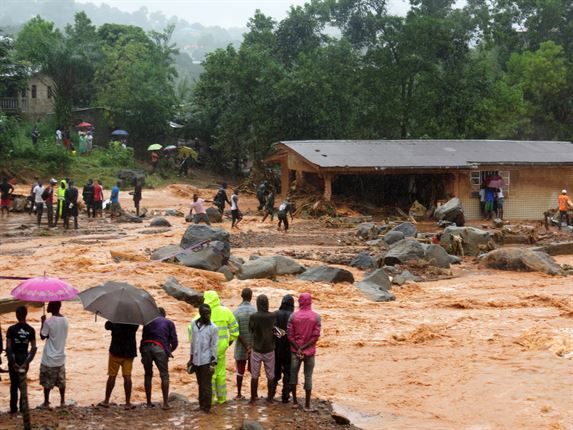Home
FORESTRY
One year after the Sierra Leone mudslides – could another be lurking in the horizon?
Posted by Chester Morton / Thursday, 23 August 2018 / No comments
 |
| Image by: cdn.24.co.za |
ONE YEAR AFTER THE SIERRA LEONE MUDSLIDES - COULD ANOTHER BE LURKING IN THE HORIZON?
By Divine Sewornu Dzokoto
Exactly a year ago this month (August), three days of heavy
rainfall and corresponding devastating floods led to a mudslide in the capital of Sierra Leone, Freetown, killing hundreds of residents. One year on, the activities around the
hillsides of Sierra Leone seems to suggest that another disaster of the same
kind could happen at any time.
The three days of heavy rainfall during especially the wet
rainy season was widely blamed for the mudslide. By the time all the water had
passed under the proverbial bridge, 1,141 people were recorded either dead or
missing and over 3,000 people were rendered homeless.
The three days of heavy rainfall was just the immediate cause
of the mudslide. There were other remote causes which eventually led to the
disaster.
Many years before the mudslides of 2017, the Sierra Leone’s
Civil War of between 1991 and 2002; had resulted in the indiscriminate felling
of the countries trees for various purposes because there was no control. This
had led to the deforestation of the land.

In the years leading to the torrential rainfall that
immediately caused the mudslide, there was unbridled construction of large
homes on the hillside areas of the capital. Trees had to be cut down to make
way for these constructions. The result was that the stability of the hillsides
was rendered weak. A hazard had been created, waiting to metamorphose into a
disaster.
The drainage system in Freetown was nothing to write home
about. The absence of a proper drainage system meant that the runoff water
could not be properly channeled to avoid the havoc that was eventually caused.
The above factors, being the remote reasons which caused the disaster, it came
as no surprise to those who were overly concerned and feared such a disaster
was in the waiting.
What is the surprise, however, is that there does not seem to
be any change in behaviour in the aftermath of the mudslide which claimed so
many innocent lives. Trees are cut down recklessly for its timber because it is
needed and widely used in the construction sector. Structures are still going
up in the hillside area, a phenomenon that was part of the remote causes of the
August, 2017 mudslide.

Charcoal business is still booming in Sierra Leone, in the
absence of cheaper alternative means of generating fuel for domestic use. Charcoal is
obtained after trees are felled and burned. The felling of trees to make
charcoal is a further contribution to the deforestation of the country.
The mining of stones is another cause for concern. Mining of
stones is also to support the construction sector to build private property and
public infrastructure. Important as these constructions may be, it also further
weakens the holding capacity of the soil.
Also, climate change, which is a known reality, is resulting
in much fewer rains and when they do come, they are very heavy and much
stronger. Experts are warning that there are going to be much stronger rains in
the future, thanks to climate change.
If in Sierra Leone, residents do not desist from the very
things that caused the 2017 mudslide and loss of life, then the catastrophe of
2017 are only waiting to occur, the question is when?
ALSO READ:
Six important roles forest reserves play in the lives of citizens
Six reasons which support the creation of tree plantations
<<Back to Home Page
Go to other topics in Forestry>>
Go to the list of other subjects>>
Related Posts













